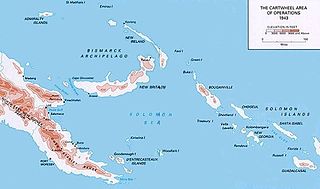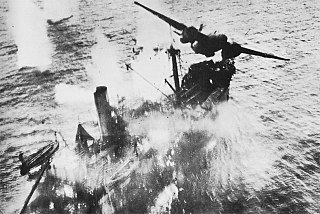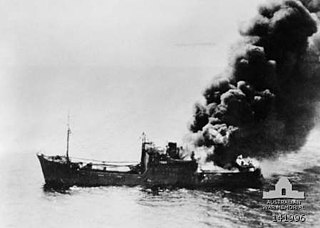
USS Gato (SS-212) was the lead ship of her class of submarine in the United States Navy. She was the first Navy ship named for the common name used for a number of species of catshark. She was commissioned only days after the declaration of war and made thirteen combat patrols during World War II. She survived the war and spent the post-war period as a training ship before being sold for scrapping in 1960.

USS Albacore (SS-218) was a Gato-class submarine which served in the Pacific Theater of Operations during World War II, winning the Presidential Unit Citation and nine battle stars for her service. During the war, she was credited with sinking 13 Japanese ships and damaging another five; not all of these credits were confirmed by postwar Joint Army–Navy Assessment Committee (JANAC) accounting. She also holds the distinction of sinking the highest warship tonnage of any U.S. submarine. She was lost in 1944, probably sunk by a mine off northern Hokkaidō on 7 November.

USS Scamp (SS-277), a Gato-class submarine, was the first ship of the United States Navy to be named for the scamp grouper, a member of the family Serranidae.

USS Gunnel (SS-253), a Gato-class submarine, was the only ship of the United States Navy to be named for the gunnel.

Operation Cartwheel was a major military operation for the Allies in the Pacific theatre of World War II. Cartwheel was an operation aimed at neutralising the major Japanese base at Rabaul. The operation was directed by the Supreme Allied Commander in the South West Pacific Area (SWPA), General Douglas MacArthur, whose forces had advanced along the northeast coast of New Guinea and occupied nearby islands. Allied forces from the South Pacific Area, under Admiral William Halsey, advanced through the Solomon Islands toward Bougainville. The Allied forces involved were from Australia, the Netherlands, New Zealand, the US, and various Pacific Islands.

The Battle of the Bismarck Sea took place in the South West Pacific Area (SWPA) during World War II when aircraft of the U.S. Fifth Air Force and the Royal Australian Air Force (RAAF) attacked a Japanese convoy carrying troops to Lae, New Guinea. Most of the Japanese task force was destroyed, and Japanese troop losses were heavy.

Masatomi Kimura was an admiral in the Imperial Japanese Navy during World War II.

Skip bombing was a low-level bombing technique independently developed by several of the combatant nations in World War II, notably Italy, Australia, Britain, Soviet Union and the United States. It allows an aircraft to attack shipping by skipping the bomb across the water like a stone. Dropped at very low altitudes, the bomb never rises more than about 5 metres (16 ft) above the surface of the water, ensuring that it will hit the side of the ship as long as it is aimed correctly.
The Battle of the Bismarck Sea took place in the South West Pacific Area (SWPA) during World War II.

Yasukuni Maru (靖国丸) was a Japanese ocean liner owned by Nippon Yusen Kaisha (NYK). The ship was launched in 1930 by Mitsubishi Shipbuilding & Engineering Co. at Nagasaki, on the southern island of Kyūshū, Japan, entering service in 1930. The ship was named for the Yasukuni Shrine, a famous Shinto shrine dedicated to the war dead of Japan, located in Tokyo.

Kembu Maru was a 953-ton transport ship of Imperial Japanese Army during World War II.
Aiyo Maru was a 2,746-ton Type 1C Standard cargo ship/transport ship launched in 1941 and was requisitioned from her owners on 24 December 1942 by the Imperial Japanese Army during World War II. The ship was sunk by aircraft of the United States Army Air Forces and Royal Australian Air Force during the Battle of the Bismarck Sea on 3 March 1943.
Sin-ai Maru, also known as Shin-ai Maru was a 3,794 ton transport ship of the Imperial Japanese Army during World War II.
SS Kyokusei Maru (Kanji:旭盛丸) was a 3,794 GRT transport ship of the Imperial Japanese Army during World War II.
Oigawa Maru (大井川丸) was a 6,494 GRT transport ship of the Imperial Japanese Army during World War II.

Noshiro Maru was a Nippon Yusen Kaisen (NYK) Liner completed in 1934 and requisitioned by the Imperial Japanese Army (IJA) in 1937 to transport troops to China following the Marco Polo Bridge Incident. She was later returned to civilian service before being converted to an armed merchant cruiser by the Imperial Japanese Navy (IJN) in 1941. She was bombed twice and torpedoed twice as a World War II troopship before being abandoned at Manila in 1944.
Lima Maru was a 6,989-ton Japanese troop transport during World War II, which sank on 8 February 1944 with great loss of life.

The Nojima Maru, also known as Noshima Maru or Nozima Maru, was an 8,215 ton coal ship, also used as troop transport ship by the Imperial Japanese Army (IJA) during World War II.
SS Saarland was a 6,870 ton German passenger ship, which was sold to Japan in 1940, renamed Teiyo Maru and used as troop transport ship by the Imperial Japanese Army (IJA) during World War II. It sank during the Battle of the Bismarck Sea with great loss of life.

Suwa Maru (諏訪丸) was a Japanese passenger/cargo ship owned by Nippon Yusen Kaisha (NYK). The ship was launched in 1914 by Mitsubishi Shipbuilding & Engineering Co. at Nagasaki, Japan. The ship was named for the Suwa Jinja, a noted Shinto shrine located in Suwa, Nagano. In July 1941 the ship was taken into military service, and after being struck by torpedoes was beached on Wake island in the Pacific in 1943. Since it was able to beach there was not much loss of life, though the ship was later struck again a few months later and the wreck visible for many years after the war.













